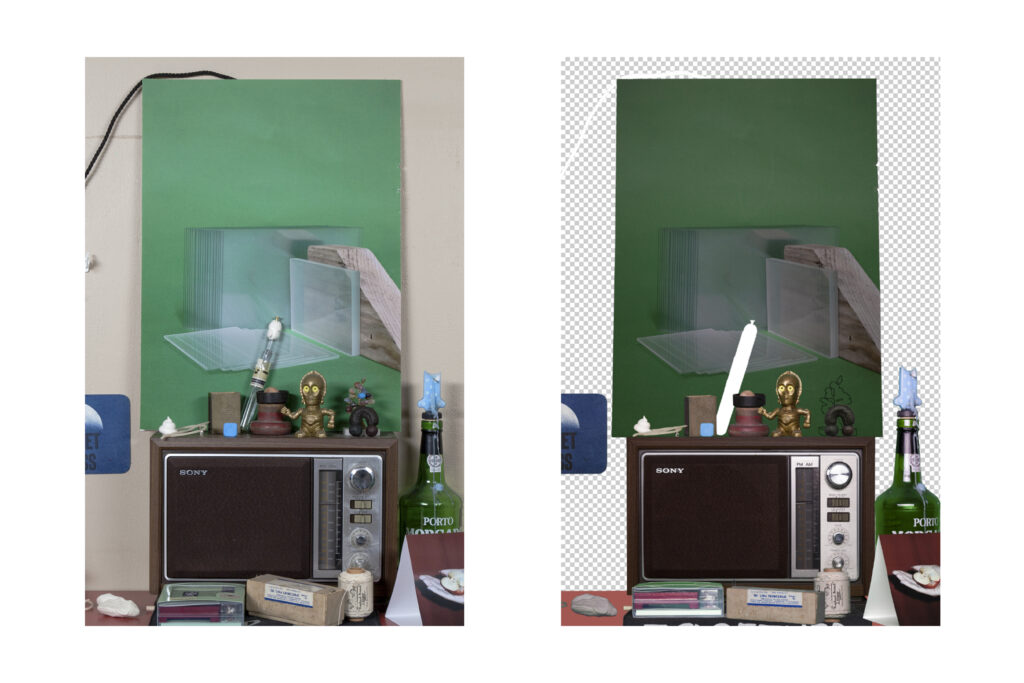
Root Division is full of fresh new energy this month. Currently on display in RD’s main gallery is their biannual MFA Now exhibition, which showcases work by current students in the top MFA programs around the Bay Area. Juried by ProArts Gallery director Natalia Mount, the work in this show covers a broad range of topics including race, gender, identity, and modern life–all from the perspectives of emerging local artists. The Frank-Ratchye Project Space also features work by a recent MFA graduate: Root Division Studio Artist Shisi Huang. Huang, a Chinese immigrant who now lives and works in San Francisco, graduated from SFAI in 2016. In her newest work, Huang reflects upon the idea of home and what it means to belong while existing between multiple places, spaces, and communities. She sat down to talk with me about these two new pieces and her recent trip back home to China.
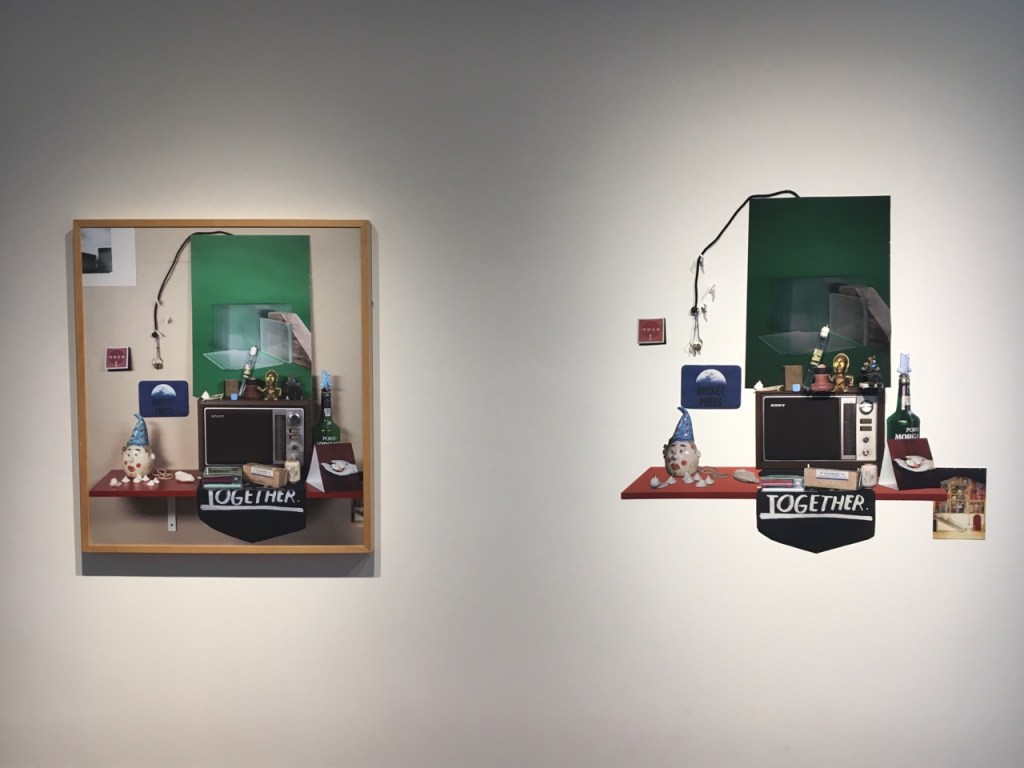
Lauren Etchells: Thanks for chatting with me about your new work Shisi! These two pieces in the Frank-Ratchye Project Space look pretty different from the video work I’ve seen you do. Can you tell me more about these works and how you went about making them?
Shisi Huang: Hi Lauren, thank you for the interview. This project is inspired from a long-time realization and awareness of how much I have changed in the past two years. This feeling has been especially triggered by my recent, unstable living situation between the US and China. A group of the younger Chinese generation has roamed away from their homeland, living in new places and growing with another language; with that comes an uneasy relationship between the wish to preserve and the willingness to adapt and make changes. I am one of them, and when I was younger I didn’t miss my home at all. However, some emotions were evoked when I went back home for Chinese New Year recently. It’s been a long while since I’ve been home — 562 days. Another change I have noticed is in my art practice. When I first became an artist, I was a photographer. Photography was an obsession of mine, it was my way of expression and the main reason to persist in being an artist. But in the past three years, I’ve broadened my practice to include site-specific installations, spatial interactive installations, videos and sounds, bookmaking–my original passion for photography has faded. With all of these changes happening to me resulting from personal struggles, political/identity-related issues, my sense of identity and belonging, doubts about my artistic practice, I began making this project with all of these concepts included.
LE: Can you tell me about your process for creating these two pieces?
SH: I chose the most ordinary daily scene in my life, photographed it, set it aside, then took photos of each object in the photo, collaged and flattened them, then created a photographic installation that mixed each object photo with some real objects together.
LE: Can you tell me more about some of the objects featured these works?
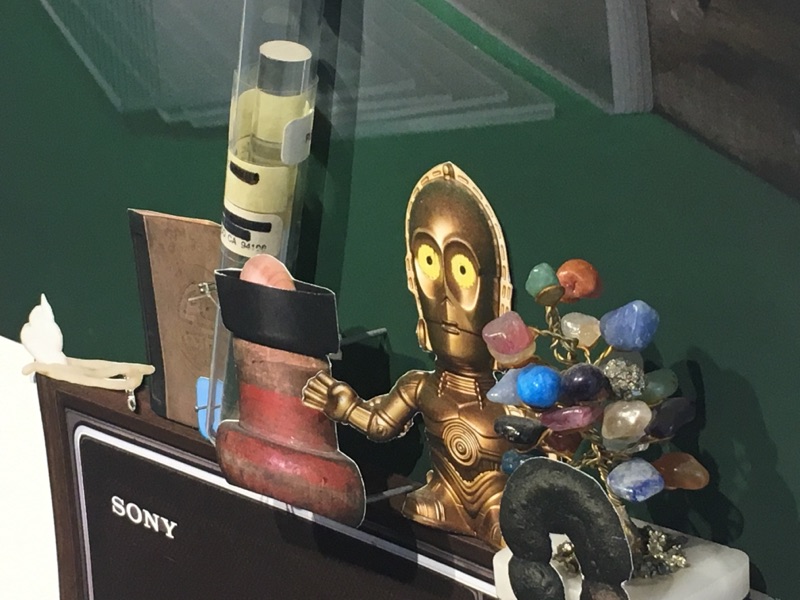
SH: This scene from my daily life does not only exist in this one photo, which was taken in my apartment in San Francisco. In this photo, there are souvenirs like the Mexican stone tree, art from my friend — the large green photo work and the hand holding half an apple–also some interesting items I’ve collected during my life in the U.S. like the vintage SONY radio, Victorian dress holder, my birthday candle on the liquor bottle left over from a party, and the time capsule I made as an art project before. The rice noodle eating manual on the left top is something could only be understood by the people who are from the same place as me, that’s our best local food, which can’t find in US at all, it evokes the strongest emotion of hometown. All of these items represent my life.
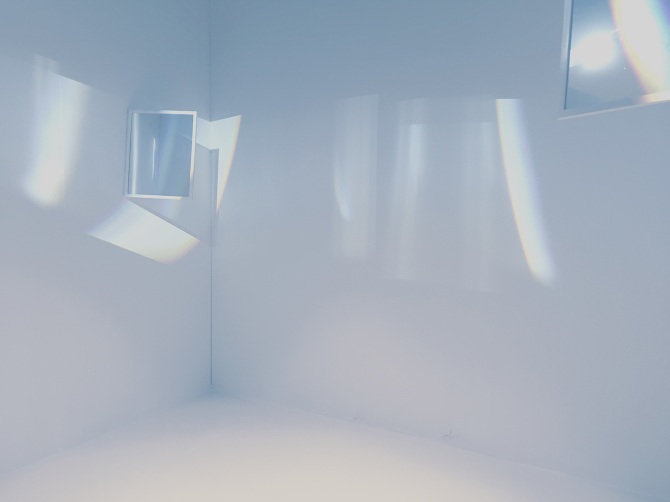
LE: When you were writing in your diary during this 56.5 hour journey back to San Francisco, you wrote a quote that I really love, “I have three homes, ironically, I also belong fully to none.” Can you speak more about this feeling and how it affects you as an artist?
SH: Yes, I have three homes — my mom’s new house in Changde was the place I visited during my last trip back to China. She moved to the new house one year ago when I was not there. So this home is completely new for me. What made me feel weird while I was visiting was that although my mom made this new home so warm and comfortable, I felt like I was waking up in a fancy hotel every morning. The second home is in Changsha, which is my house in China. I lived there for a long time before coming to the U.S. This house contains all of my collected souvenirs from earlier travels, presents from old friends, all books and magazines I used to love, and collected posters on the wall. Even during my transitory stay this time, all of these items still look the same, but I could strongly feel the distance between where I am now and how it was then, especially because that space created a perfect illusion of frozen time. The third home is my apartment in San Francisco. It’s a tiny and uncomfortable place compared to the two houses in China. However, even though it is the place I sleep in every night, I have no idea when I might have to leave because I don’t belong to this country. One week after I went back to China, Trump was inaugurated as the president of the United States, and what happened afterwards gave me nightmares. The sense of insecurity I felt, thinking deeply about all of this happened during this 56.5 hours journey back to San Francisco.
LE: You work in a pretty wide range of mediums. Can you tell me what type of work you like to make? Do you have a favorite medium?
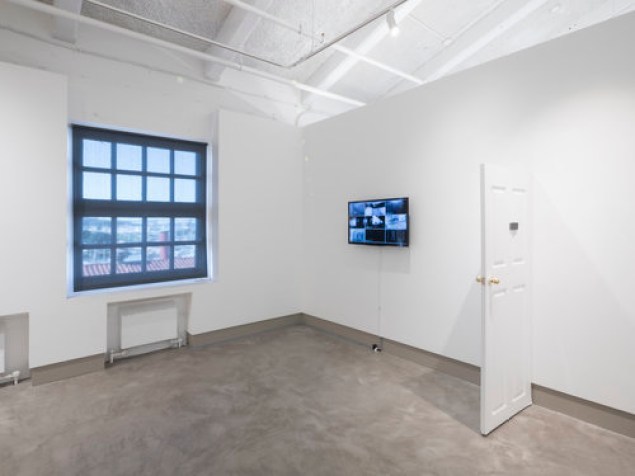
SH: I enjoy all the mediums I’ve been working in, they bring me different, refreshing experiences.
In recent years, my favorite medium has turned out to be spatial interactive installations, which is super fun to work with, especially in large spaces with lots of people; however, I do feel this type of work has its limitations in the Bay Area.
LE: For you personally, is there a common subject matter or theme that you find yourself exploring in your artistic practice?
SH: Yes, most of my works come from my personal life–experiences, emotions–but my work usually turns out to be a more general, big, balanced look and these feelings instead of their very personal origins. I think this is the common thing in my different artistic projects.
LE: Are there any other artists you’re looking at currently? If so, who are they and why?
SH: Yes, Alicja Kwade, Sarah Sze and Camille Henrot. And I am reading some awesome photobooks, which I just got from LA art book fair for 3 standard stoppage studio which founded by me and two dear friends. Ekaterina by Romain Mader is one my of favorite books lately.
LE: What is a typical day like for you in your studio? Is there anything else you’re currently working on?
SH: You can usually find me working on the floor for bigger scale works, or testing layouts on the wall. I’m currently working on another photo project and a magazine publication for my studio. I’m also working on a more challenging video/spatial interactive installation project — it is a fictional interaction with audience based on a real, rare experience. It is about the grey area between private space and public space, surveillance in personal life, how physical and psychological experiences become unique and complicated to describe and explain to others, and how the layers of individual life reflect and refract the society. I am trying to find a proper and supportive space to show it.
LE: What is it like having a studio here at Root Division?
SH: It is awesome to have a studio in the center of San Francisco, being part of this great art community, and also gaining teaching experience. I feel so lucky to have gotten a studio at Root Division right after I graduated from SFAI last year.
LE: Thanks for chatting with me, Shisi! You have certainly accomplished a lot since your graduation. Congratulations on this new work.
